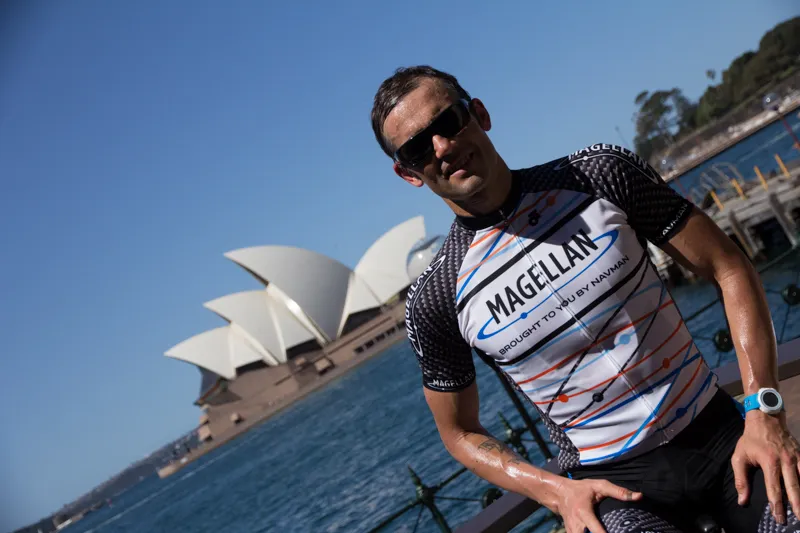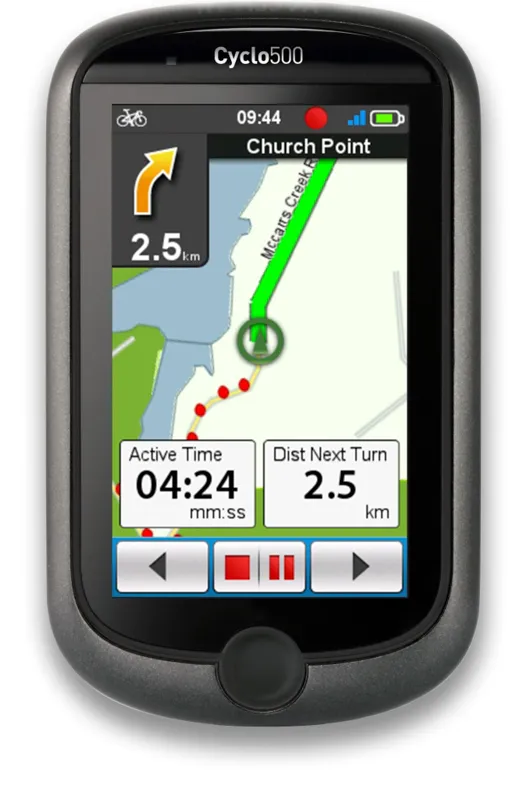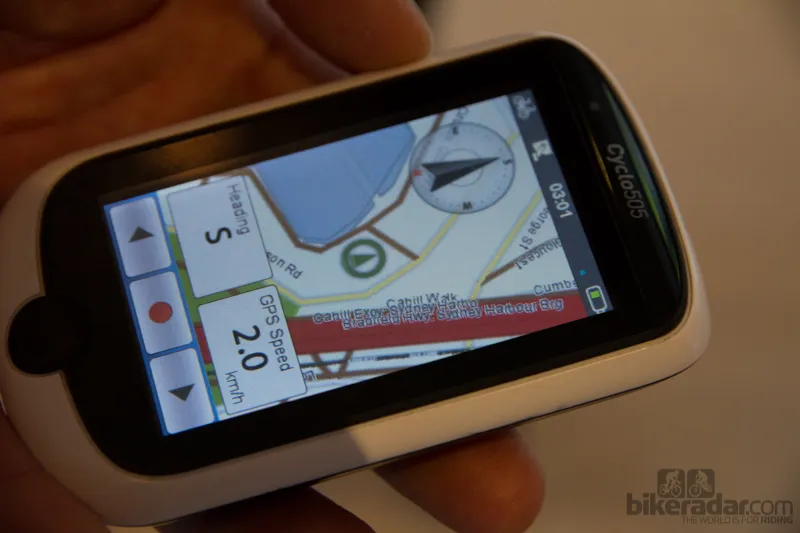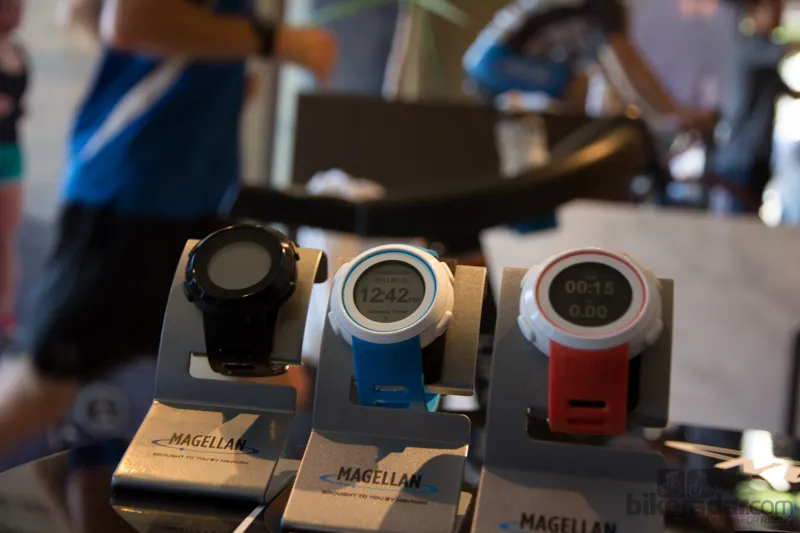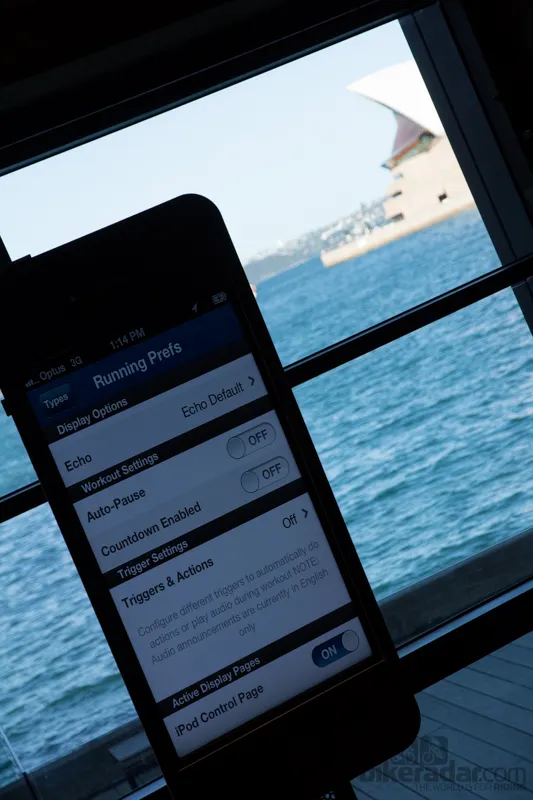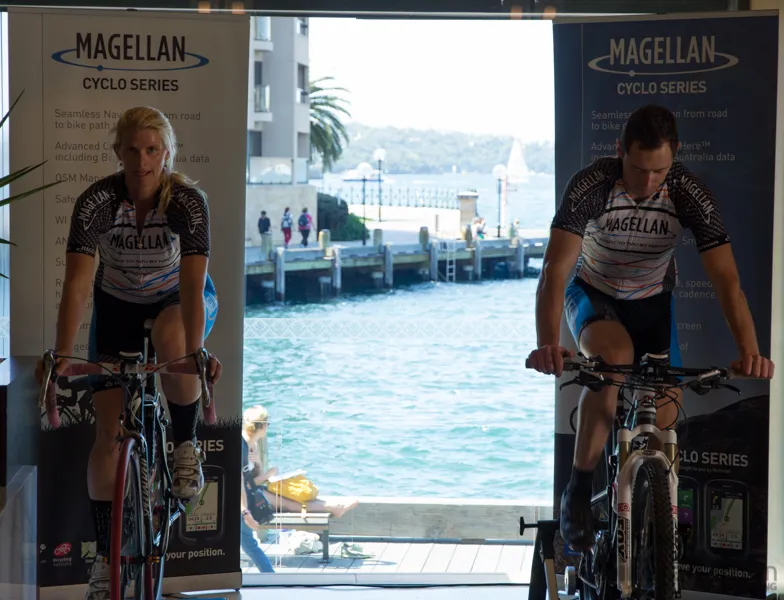We’ve spent the last few months testing the Magellan Cyclo105 (sold as Mio in Europe) and our eyes are now open to this brand that’s pushing hard into an otherwise Garmin-dominated market. On the shores of Sydney Harbour, Magellan launched the new Cyclo500 series and the Echo watch, two model lines that preach a future of wireless connectivity and smartphone integration.
Starting with the Cyclo500 series, an on-bike GPS unit with built in directional mapping and a near overwhelming number of connectivity options. With dimensions of 61 x 103 x 18.9 mm and weighing in at 129g, the unit isn’t small, but has directional mapping – the screen size was made large to see detail.
Offering Wi-Fi, Bluetooth 4.0 and ANT+ (505 only), there isn’t much the Cyclo500 series won’t connect with. Using Wi-Fi or connecting via Bluetooth to a smartphone, the Cyclo allows for wireless upload to third party training sites such as Strava.
The Cyclo500 series is split into two models – the Cyclo500 and the Cyclo505. In a nutshell, they're both the same; however, the Cyclo505 gains ANT+ compatibility and so is the better fit for cyclists seeking more involved training data such as power, heart rate and cadence. The Cyclo505 also uses ANT+ for 'shake and share', a feature that syncs with other Cyclo505 units so riders can share routes with friends and ensure everyone is on the same path if the group splits.
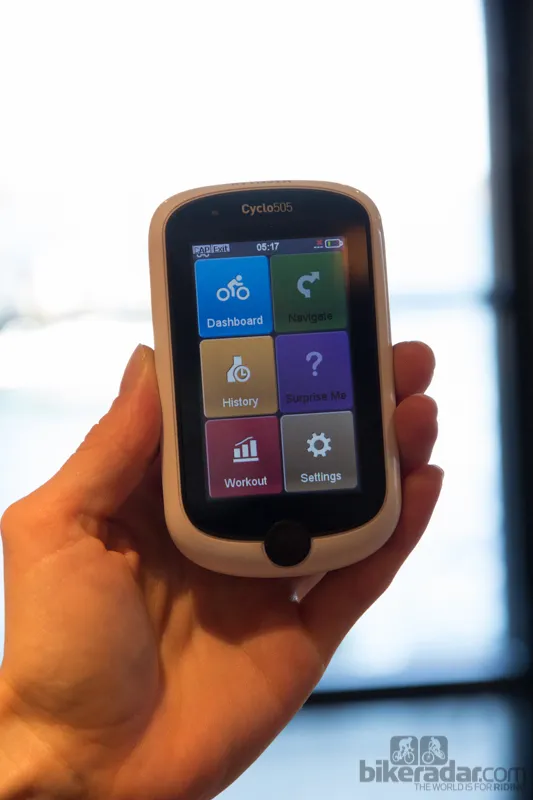
The Cyclo505 – feature-packed behind those menu options
Moving forward, Magellan believe the market will see a greater uptake of the Bluetooth 4.0 open standard over the ANT+ protocol. This trend is already happening with the likes of Wahoo fitness, Powertap and Stages all offering Bluetooth compatible training accessories.
The pre-loaded, turn-by-turn Australia/NZ mapping is cyclist-centric. The user can set a route and choose whether to stick to sealed roads or shared bike paths, or even head off-road, with popular riding spots and key interest points – such as bike stores and cafes – flagged up.
The 'surprise me' feature enables the Cyclo to choose a ride for you. Pick a distance or ride time and you’ll be presented with three difficulty choices.
The Cyclo500 will sell for AU$379, while the Cyclo505 will be available in two options – the unit alone for AU$399, or the bundle including ANT+ Cadence and Heart Rate sensors for AU$479. US pricing and availability is unknown.
The Magellan Echo, meanwhile, isn't specifically a cycling product but a real-time display for users of fitness mobile apps: a lightweight wristwatch that syncs to a smartphone via Bluetooth 4.0. The Echo was initially designed for enthusiast runners; however, it may appeal to the growing number of cyclists who use their mobile phones to record ride data.
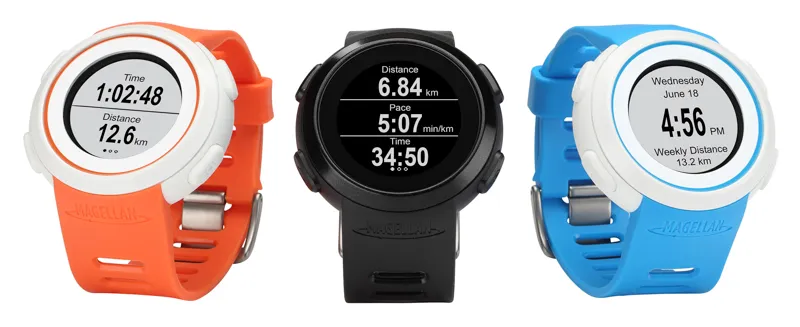
Magellan Echo – it simply echoes data from your phone via Bluetooth 4.0
The Echo can display anything a compatible app can display – heart rate, cadence, speed, altitude and power are all available, assuming you have the appropriate sensors. The only practical concern for the Echo is phone battery life; as a Bluetooth 4.0 device, its battery usage is light, but it’s a limit worth noting for the ultra-endurance athlete.
The Echo gives four individual screens of data to toggle between, which can be customized within the phone app of choice. Music can also be controlled through the watch, with song choice showing on the screen.
We asked the question about incoming calls and the answer was positive – the Echo (and Cyclo500) platform can have firmware upgrades, and this is something that they're working toward.
Currently supporting apps are only offered on iPhone, but Android compatibility is expected in future. With Bluetooth 4.0 featuring only on the iPhone 4S and higher, the Echo won’t be for all iPhone users either.
The 2.54cm (1”) diameter display proved easy to read and the unit is water resistant, but not designed for swimming use. Upload and recharge cables are not necessary, with all data kept on the phone and an estimated six-month battery life from the user-replaceable CR2032 battery. The Echo will sell for AU/US$149 or as a package with a Bluetooth heart rate strap for AU/US$199. It’s expected to hit stores in early November.
